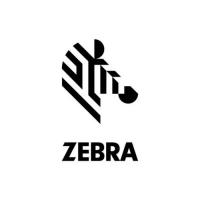Mobile Printer CPCLProgramming Manual P5-13
POSTNET AND FACING IDENTIFICATION MARKS
The US Postnet bar code is used only to help automate
mail delivery. To comply with postal regulations, set the
height of the bar code to 30 dots, the wide/narrow bar
ratio at 3.5:1, and the width of the narrow bar to 3 dots on
a 200 dpi printer. The data sent to the bar code can be 5,
9, or 11 digits long. For example, to send mail to 30 Plan
Way, Warwick, RI 02886-1234, the data would be
5 digits- ZIP Code only: 02886
9 digits - ZIP + 4 Code: 028861234
11 digits - ZIP + 4 Code and last two digits in address:
02886123430
The Postnet bar code also contains an automatically
calculated checksum as the last character in the
decoded bar code. As a short example, our data will
be “02881123430”
Step 1: Add the numerical value of all the characters.
0+2+8+8+1+1+2+3+4+3+0 = 32.
Step 2: Divide this number by 10 and use the remain-
der, or modulo. In our example, this is 2
Step 3: Subtract the remainder (or modulo) from 10 to
get the check sum. The check sum for our example
would be 8 (10 - 32 mod 10 for programmers).
A Facing Identification Mark (FIM) is the bar in the
upper right corner of an envelope near the stamp. To
comply with postal regulations, set the height of the bar
code to 125 dots, the ratio to 1.5:1 dots, and the width of
the narrow bar to 6 dots. There are three different char-
acters you can send as data: A, B, and C.
FIM A: Courtesy Reply Mail with Postnet Bar code
FIM B: Business Reply Mail, Penalty Mail, or Franked

